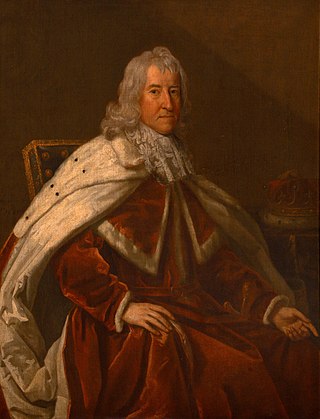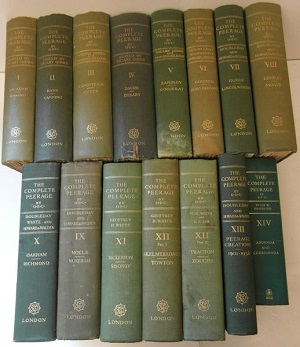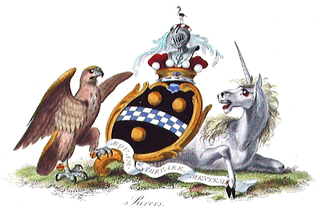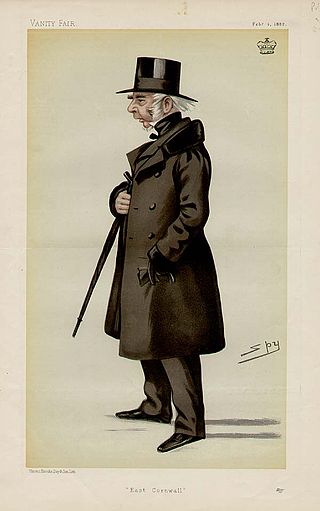
Earl of Essex is a title in the Peerage of England which was first created in the 12th century by King Stephen of England. The title has been recreated eight times from its original inception, beginning with a new first Earl upon each new creation. The most well-known Earls of Essex were Thomas Cromwell, chief minister to King Henry VIII, Sir William Parr (1513-1571) who was brother to Queen Catherine Parr who was the sixth wife of King Henry VIII, and Robert Devereux, 2nd Earl of Essex (1565–1601), a favourite of Queen Elizabeth I who led Essex's Rebellion in 1601.

The Peerage Act 1963 is an Act of the Parliament of the United Kingdom that permits female hereditary peers and all Scottish hereditary peers to sit in the House of Lords and allows newly inherited hereditary peerages to be disclaimed.

John Robartes, 1st Earl of Radnor was an English politician, peer and military officer who fought for the Parliamentary cause during the English Civil War. He retired from public life before the trial and execution of Charles I (1649) and did not take an active part in politics until after the Restoration in 1660. During the reign of Charles II he opposed the Cavalier party. Toward the end of his life he opposed the more extreme Protestant groups, led by Anthony Ashley Cooper, 1st Earl of Shaftesbury, who refused to accept the succession of James because he was a self-declared Catholic.

Duke of Richmond is a title in the Peerage of England that has been created four times in British history. It has been held by members of the royal Tudor and Stuart families.

Earl of Radnor, of the County of Radnor, is a title which has been created twice. It was first created in the Peerage of England in 1679 for John Robartes, 2nd Baron Robartes, a notable political figure of the reign of Charles II. The earldom was created for a second time in the Peerage of Great Britain in 1765 for William Bouverie, 2nd Viscount Folkestone.

Earl of Halifax is a title that has been created four times in British history—once in the Peerage of England, twice in the Peerage of Great Britain, and once in the Peerage of the United Kingdom. The name of the peerage refers to Halifax, West Yorkshire.

Earl of Strafford is a title that has been created three times in English and British history.
Baron Ravensworth, of Ravensworth Castle in the County Palatine of Durham and of Eslington Park in the County of Northumberland, is a title in the Peerage of the United Kingdom.

Baron Hunsdon is a title that has been created three times.

Earl of Yarmouth is a title that has been created three times in British history, once in the Peerage of England and twice in the Peerage of Great Britain. The first creation came in the Peerage of England in 1679 in favour of the politician and scientist Robert Paston, 1st Viscount Yarmouth. He had already been created Baron Paston and Viscount Yarmouth in the Peerage of England in 1673. He was the son of William Paston, who had been created a Baronet, of Oxnead in the County of Norfolk, in the Baronetage of England in 1641. Lord Yarmouth was succeeded by his son, the second Earl. He notably served as Treasurer of the Household between 1687 and 1689. He had no surviving male issue and the titles became extinct on his death in 1732.

Baron Greenwich was a title in the Peerage of the United Kingdom that has been created twice in British history.
Earl of Feversham is a title that has been created three times, once in the Peerage of England, once in the Peerage of Great Britain and once in the Peerage of the United Kingdom. All three creations are now extinct.

Viscount Clifden, of Gowran in the County of Kilkenny, Ireland, was a title in the Peerage of Ireland. It was created on 12 January 1781 for James Agar, 1st Baron Clifden. He had already been created Baron Clifden, of Gowran in the County of Kilkenny, in 1776, also in the Peerage of Ireland. The Viscounts also held the titles of Baron Mendip in the Peerage of Great Britain from 1802 to 1974 and Baron Dover from 1836 to 1899, when this title became extinct, and Baron Robartes from 1899 to 1974, when this title became extinct, the two latter titles which were in the Peerage of the United Kingdom. The interrelated histories of the peerages follow below.

Earl of Norwich was a title that was created four times in British history, three times in the Peerage of England and once in the Peerage of Great Britain. The first creation came in the Peerage of England in 1626 in favour of the courtier and politician Edward Denny, 1st Baron Denny. He had already been created Baron Denny, of Waltham in the County of Essex, in 1604, also in the Peerage of England. Lord Norwich was the grandson of Sir Anthony Denny, confidant of Henry VIII, and the nephew of Sir Edward Denny. He had no sons and the titles became extinct on his death in 1630.

The Complete Peerage ; first edition by George Edward Cokayne, Clarenceux King of Arms; 2nd edition revised by Vicary Gibbs et al.) is a comprehensive work on the titled aristocracy of the British Isles.

Baron Rivers was a title that was created four times in British history, twice in the Peerage of England, once in the Peerage of Great Britain and once in the Peerage of the United Kingdom.

The title of Baron Herbert of Chirbury was created five times, twice in the Peerage of England, twice in the Peerage of Great Britain and once in the Peerage of the United Kingdom.

Baron Haversham is a title that has been created twice, once in the Peerage of England and once in the Peerage of the United Kingdom. Both creations are extinct. The first creation came on 4 May 1696, when Sir John Thompson, 1st Baronet was created Baron Haversham, of Haversham in the County of Buckingham, in the Peerage of England. He had formerly been member of parliament for Gatton and had already been created a Baronet, of Haversham in the County of Buckingham, in the Baronetage of England in 1673. His son, the second Baron, sat as Member of Parliament for Bletchingley and Gatton, before inheriting the title. He had no sons and the barony became extinct on his death on 11 April 1745.

Thomas James Agar-Robartes, 1st Baron Robartes, was a British politician.














